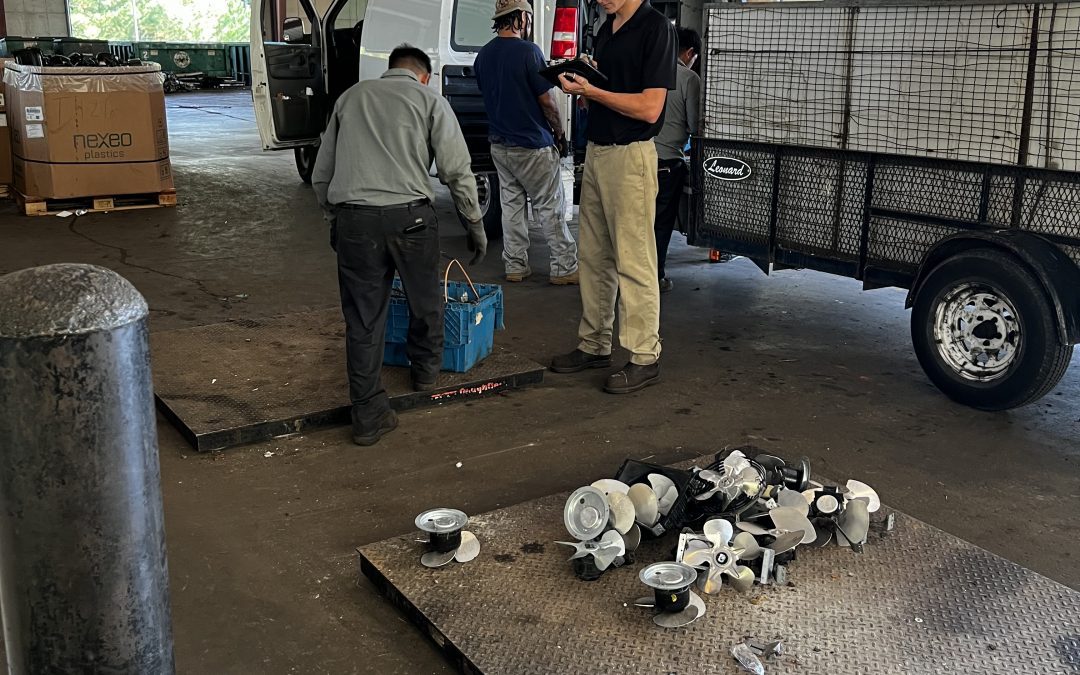Recycling things has become sort of second nature for most of us. Each week, our local waste disposal folks come by and pick up our trash, and another truck comes by to grab our newspapers, bottles and cans. Grocery stores have programs to recycle plastic bags, and clothing stores have started programs to recycle old clothing. Adidas has a sneaker made out of recycled materials, and when you wear a pair out, you can send them back to Adidas for them to make a new pair.
Most of these recycling practices, however, don’t really do anything to put any money in your pocket. We just do them because it’s environmentally-friendly and it’s the right thing to do.
Recycling scrap metal allows you to do something good for the environment AND put a few dollars in your pocket.
But how do you start?
The first step is to learn your metals. The scrap that we accept comes in two forms: ferrous and non-ferrous. To determine which is which, simply try sticking a magnet to it. Most hardware stores carry small magnets with handles – contractors use them to grab loose nails and screws on job sites – but a basic refrigerator magnet will do. If the magnet sticks, it’s ferrous metal. That means it has a high content of iron. This is less valuable than non-ferrous metal, but still adds up. Non-ferrous metals are materials like aluminum and copper. The great value of these metals is in their ability to be recycled over and over. A pound of aluminum can be used to make a pound of aluminum, over and over again.
Knowing the value of each metal is also important. Once you know that you have copper, you need to look at the condition of the copper. It can be bright and shiny or dull and reddish in color. As it ages and oxidizes, it may appear brown or even green. Bright, shiny copper is the newest and cleanest, and will give you the best bang for your buck.
Now that you know the basics, you need to know where to find it. The easiest spot is around your house. You may have an old aluminum ladder that you no longer trust. A home renovation may yield a truckload of copper or iron plumbing.
- It’s important to point out here that we know where scrap metal comes from. Many of the folks who trade scrap with us are contractors and builders and work in machine shops. We know them and know how to recognize their scrap. If someone strange shows up with a truckload of brand-new shiny copper, it’s going to raise our eyebrows. That stuff is more valuable as part of a plumbing project than as scrap.
If a neighbor is renovating or throwing away an old swing set, ask them if you can scrap it for them. It’s always important to ask first. Those folks we mentioned above might like to scrap for themselves to fund their next project. You could also establish a relationship with a local mechanic or appliance repairman. Their castoffs could become your cash, and they’ll be rid of parts and appliances that no longer work.
Scrapping isn’t for everyone and it’s hard work. Having the tools and a way to get it to us is only half of the equation. But once you learn the basics and a bit about metallurgy, it’s an easy way to earn a few dollars.

Recent Comments